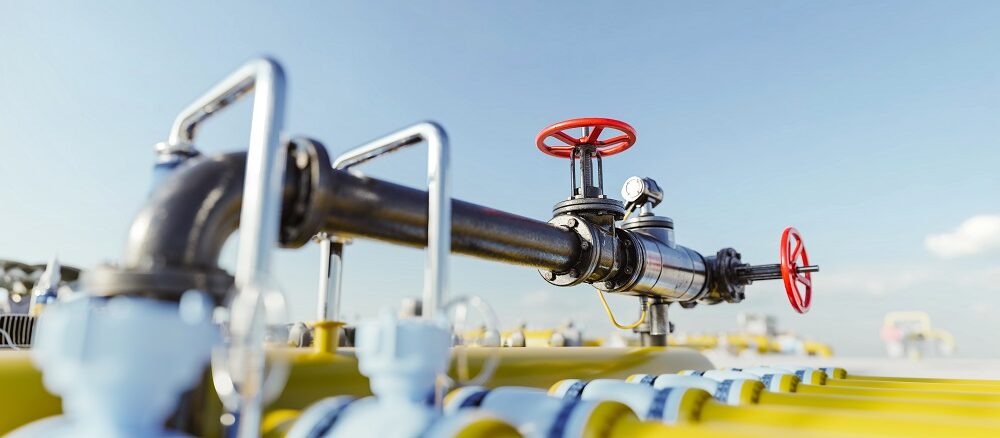
Amine scrubbing is a critical process in the oil and gas industry. This process checks the natural gas’s quality before retailing it or processing it further. In this process, hydrogen sulfide (H2S) and carbon dioxide (CO2) are removed from gases using aqueous solutions of different alkylamines (often referred to as amines). These amine-based techniques are also known as gas sweetening and acid gas removal.
What Is Amine?
An amine is a functional group that has a nitrogen atom with a single pair of lone electrons. Amines are structurally similar to ammonia, with nitrogen being able to bind up to three hydrogen atoms together. It also has a feature that stems from its carbon-based structure.

What Is Amine Scrubbing?
Natural gas and hydrogen have been separated from carbon dioxide (CO2) since 1930 via amine scrubbing. It’s a reliable technique ready for larger-scale testing and implementation in coal-fired power plant CO2 capture.
How Is Amine Scrubbing Done?
Amine scrubbing uses amine pumps, like the Carver Pump, to provide high pressure in a closed-loop system. The pressure to be used for amine scrubbing must be maintained at a high level while maintaining a low temperature to make them more effective at capturing H2S and CO2.
Where Do You Use Amine Scrubbing?
Aside from the petrochemical and natural gas industries, amine scrubbing is used in various other industries. Acid pollutants are removed from some chemical refinement processes for them to work. Removing sulfur from gas products, like syngas (synthesis gas), which is a mixture of hydrogen and carbon monoxide, may be necessary to meet environmental health and safety regulations.
Here are some processes that utilize amine scrubbing:
- Refining Petroleum Products
Sulfur (S) can be extracted from raw gas and purified petroleum products, like jet fuel, diesel fuel, gasoline, petrol, and kerosene, using hydrodesulfurization (HDS). When using fuels in automobiles, aircraft, locomotives, ships, and other kinds of fuel combustion, the sulfur dioxide (SO2) emissions are reduced by eliminating sulfur and making products, such as diminished levels of sulfur in diesel.
Sulfur needs to be removed from petroleum products because the former contaminates the metal catalysts (rhenium and platinum) in the catalytic reformers that are later used to improve the octane number of the naphtha refinery streams. Hydrogen sulfide (H2S) gas is captured and removed from hydrodesulfurization in industrial settings. Hydrogen sulfide gas is transformed into sulfuric acid (H2SO4) as a byproduct in petroleum processing plants.
- Converting Natural Gas To Elemental Sulfur
Another process that uses amine scrubbing is the Claus process to convert natural gas to elemental sulfur. It’s one of the gas industry’s most widely used desulfurizing processes.
The multi-step Claus process is achieved by recovering sulfur from hydrogen sulfide gaseous byproduct gases and other industrial processes containing hydrogen sulfide. Natural gas processing plants, gasification or synthesis gas plants, and refineries generate most of the by-product gases (Selexol, Rectisol, Purisol, and amine scrubbers). Hydrogen cyanide, hydrocarbons, sulfur dioxide, and ammonia are also included in these by-product gases.
Claus plants can recover sulfur from gases with an H2S content of over 25%. At the same time, other configurations, such as a split-flow setup or feed, and air preheating, can be utilized to treat leaner feeds for sulfur recovery. For example, Claus plants convert hydrogen sulfide produced during the hydrodesulfurization of refinery naphthas and other petroleum oils to sulfur.
- Converting Sulfur To Sulfuric Acid
Amine scrubbing is also used in the desulfurizing process. Wet sulfuric acid (WSA) is a gas desulfurization method. Sulfuric acid (H2SO4) has been commercially available since Haldor Topsoe introduced and patented this technology in the late 1980s. It’s been widely accepted as a method of removing sulfur from various gas processes and producing high-pressure steam. The WSA technique can be used in all industries where sulfur removal is a concern.
- Capturing Carbon Dioxide
When carbon dioxide (CO2) is captured before it enters the atmosphere, transported, and stored (carbon sequestration), the process is called carbon capture and storage (CCS). Significant point sources, like a chemical factory or biomass power plan, capture CO2 and store it underground in geological formations. The goal is to reduce the consequences of climate change by preventing the release of CO2 from heavy industry.
CO2 has been pumped into geological formations for decades, but long-term CO2 storage is a relatively novel idea. CO2 storage includes more profitable oil recovery.
In the context of carbon capture and utilization (CCU) and carbon capture and sequestration (CCS), both terms are often used interchangeably (CCUS). This is because CCS is a costly process that produces a low-value product (i.e., CO2). As a result, the high costs of carbon capture can be mitigated by using inexpensive CO2 for manufacturing high-value compounds, making it a more economically viable option than doing it alone.
- Burning Coal To Generate Electricity
Using coal to create electricity is known as a coal power plant or coal-fired power plant. Over 2,000 gigawatts of power are generated by over 8,500 coal-fired power plants worldwide. Although they produce nearly a third of the world’s electricity, these plants are responsible for illnesses and premature deaths.
Coal-fired and natural-gas-fired power plants are the two types of fossil fuel power plants. Typically, pulverized coal is burned in a coal boiler. Wind turbines generate electricity using turbines that are powered by steam from the furnace. As a result, coal’s chemical energy is transformed into heat, mechanical energy, and, eventually, electricity.
Conclusion
Amine scrubbing isn’t a term that everyone is familiar with. However, this process plays an essential role in people’s daily lives. For example, amine scrubbing refines petroleum products to become the gas people use to fuel their cars daily. It also removes sulfur from natural gas, making it safer. Another use of amine scrubbing is to capture carbon dioxide from the atmosphere, making the ecosystem less prone to climate change. Lastly, amine scrubbing is used to generate electricity from coal.
The most challenging part of the amine treatment process is the logistical setbacks. The process requires a high operational cost and poses risks that are detrimental to individuals and ecosystems. But, without amine scrubbing, extraction of oil, gas, or liquid hydrocarbons would fail to fulfill outlet gas criteria. That is why even if amine scrubbing systems have a high operational cost in the oil and gas industry, they are vital.
14088 Articles
Neel Achary is the editor of Business News This Week. He has been covering all the business stories, economy, and corporate stories.
Website
Facebook
Instagram
Twitter
YouTube
LinkedIn





